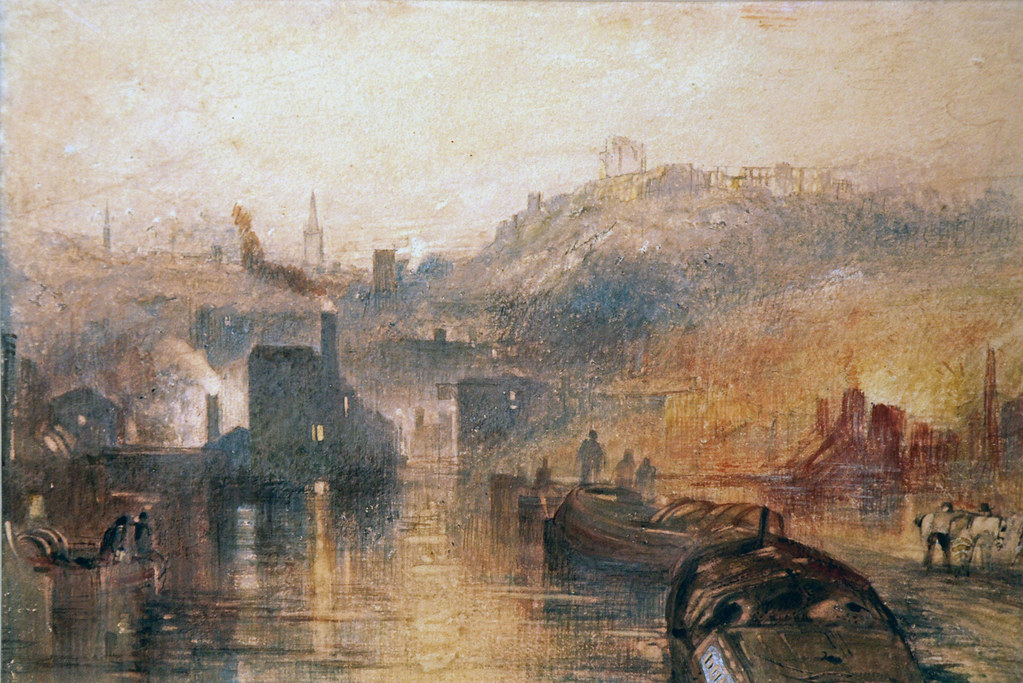Imagine that, in a journal with a name like “Climate Science,” you saw a paper which began, “Before the widespread use of fossil fuels much of the earth was covered with vast ice-sheets thousands of feet thick. But through the use of coal, oil and gas we now have a climate that, for most, is warm, productive and pleasant.”
If you had no sense of humour, you would suppose that the authors of the paper had been set up for life by Exxon or BP, and that the journal had been bought too. Otherwise you’d check the journal date to make sure it wasn’t April 1st.
Now climate science is rife with examples of cherry-picking data, and in particular date-ranges, usually to the detriment of Big Oil. But apart from the cognitive dysfunction of seeing an opposite narrative to the norm appearing uncensored in a climatology journal, how would we know this sentence was a spoof, or a fraud? It is, after all, factually true in pointing out that there is a positive correlation between fossil fuel use and two climatic scenarios.
Our disbelief in my fictional article comes only because “everybody knows” that the phrase “before the widespread use of fossil fuels” misleadingly references the Pleistocene, and we don’t need to check that to know that the crude 2-point correlation could not possibly indicate causation, from our basic knowledge of history.
It is rather harder to assess truth if papers make a similar statement about an unhealthy rise in temperature since the industrial revolution. The question of correlation and causation clearly is one issue. But few of us know from our basic education whether the world was a little cooler, warmer, or the same in the nineteenth century. We could look up the data, of course, especially in these Internet times. But we might very well not bother, since the journal is called “Climate Science” and we assume that its basic facts are in order. That’s especially true if such messages as “We all know the world has warmed with fossil fuels” is a frequent “taken for granted” introduction to all kinds of other articles, such as an interesting new way to model average temperatures. Nobody checks out common knowledge.
Suppose, though, the whole of academia has conspired to hide the fact that the real ice-age only started to end in 1880? It’s scarcely likely. But taking the integrity of science for granted is risky in smaller matters.
Here, for example, is the introduction to a 1998 paper quoted by Suzanne Humphries and Roman Bystrianyk in their book Dissolving Illusions, which questioned our over-reliance on vaccination several years before the COVID saga accentuated the issue. The quotation is from a reputable US medical journal, Paediatrics.
In the United States, pertussis has been successfully controlled by routine mass immunization of infants and children. In the prevaccine era, there were 115,000 to 270,000 cases of pertussis and 5,000 to 10,000 deaths due to the disease each year. Duting the lat 10 years, there have been 1,200 to 4,000 cases and five to 10 deaths per year.
James D. Cherry, Phillip A Brunell, Gerald Golden and David T Karzon. “Report on the Task Force on Pertussis and Pertussis Immunization.” Paediatrics, vol.81, no. 6, June 1998, Part 2, p.939.
Now, you’ll note that the subject of the paper tells us it is about how the job of getting pertussis vaccinations into arms is proceeding, around 5 decades after it began. The last thing on any reader’s mind – least of all a busy paediatrican or GP – is to question whether the figures mean what they say: harm from whooping cough has dropped dramatically, and what else but vaccines can be responsible?
Only a warped and suspicious mind would bother to look up the statistics on reading such a paper, and this is what they would find:
The y-axis marks deaths per 100k rather than totals, but the peaks and troughs in the first two decades of the twentieth century seem to correspond to the “5,000 to 10,000” deaths in the paper. But those swings apart, the average is a shallow exponential decline throughout the entire century, and the introduction of vaccination makes absolutely no visible difference to the rate of decline in mortality.
The picture for Britain is even more obvious, because by the time we introduced pertussis vaccination in the late 1950s, a similar curve had all but bottomed out. And for other diseases, incidentally, a comparable pattern is seen – one of the main arguments of the book.
There is really no doubt, from the public health data overall, that the vast majority of the decline in infectious disease has been due to clean water, proper drainage, improved housing and better diet, and not medical interventions. One of my more enlightened lecturers at medical school even admitted as such back in the 1970s. I can document this even from my own family history.
My Garvey ancestors migrated from Roscommon, Ireland, in the person of Terence, who was for reasons unknown both a foundryman and a Protestant (both rarities in Roscommon). For the entire 19th century the family were iron-workers in the Black Country, the heart of the Industrial Revolution.

Terence had 9 children, 2 of whom died in 1837 of measles. A third just made it to adulthood before succumbing to TB.
First son John had 11 children, and three of them died in the same outbreak of scarlet fever in 1864.
His first, another John, lost one child to measles early in the marriage when the family were in a back-to-back in Aston, Birmingham. But things were better when they moved to Smethwick and Handsworth, and their other five children all survived to adulthood (note the link between better health and smaller families).
John’s son Albert, my Grandad, had only two children, and both lived to old age – my father’s only mention of infant mortality in his generations was of two kids at his Grammar School dying of scarlet fever on consecutive days. Since both, like him, were named “Geoff” this was a source of ribbing from his mates, rather than their noting that “Of course, every death is a tragedy.”
I was born in 1952, had infant vaccinations only for diphtheria and tetanus, and later the dreaded Salk polio vaccine. I had pertussis as a baby, measles as an infant, chicken pox at two, mumps at 8, and rubella (I think for the first time) whilst revising for my A-levels during the 1968 Hong-Kong Flu pandemic. I also had various soon-forgotten bouts of Strep tonsillitis and otitis media, and one more memorable long illness labelled as glandular fever when I was five, but who knows if that wasn’t actually some complication of the measles vaccination?
Yet I can say that no child – not one – of my knowledge or acquaintance ever died of an infectious disease during my childhood. I know, from the stats, that some children did die, presumably mostly in those remaining pockets of inner-city poverty. I was exposed to all the old killers, and none of them caused serious harm to anyone I knew, without vaccination.
One question this raises is just how necessary our childhood vaccines, with their attendant risks, are in reality, at least until Western society collapses into starvation and filth again, when vaccines would be gone anyway. During my career I found myself asking that question as less and less serious diseases were added to the schedules. The number of vaccinations children experience now is beyond a joke. Surely one must ask if giving tens of live viruses, antigens and adjuvants in a short period into immature immune systems is, in fact, the best way to deal with a tiny residuum of risk from diseases that vaccines seem unable to eradicate? That’s a scientific question, but one that is not helped by the strong commercial incentives to sell vaccines, and the now evident capture of journals and regulators by Big Pharma.
Even more worrying, though, is that in order to write the extract from the journal article above, the authors needed to consult the historical data to get their figures. So they knew that the high mortality rates “pre-vaccination” were way back in the early twentieth century, and were no more relevant to vaccination than the Pleistocene is to fossil-fuel climate change. They knew that mortality was a tenth of that at the significant date, when vaccines were introduced, and that it would have declined to baseline with or without the shots. They knew that attributing the changes to vaccines was, at best, contentious.
In other words, a major article in a major medical journal was knowingly misleading its readership on the core matter of its subject: the effectiveness of vaccination.
The medical author of the book, Dr Humphries, points out that medicine is an information and workload-heavy occupation. I endorse that: the diligent GP is the one who reads the updates, and the really keen one (or the diligent consultant) is the one who reads the journals. Very few are trained to read articles critically, or check data – which is how Big Pharma gets away with so much fraud. We doctors are (as we see ourselves) the footsoldiers delivering health, and given our training, that is more likely to mean footsoldiers for scientific wonder-drugs than for better drains or building regulations.
So the irony is that anyone who does check the assertions and finds them wanting is facing a scientific profession united against ignorance, that has a fairly passing acquaintance with science. Marginalisation is a guaranteed result.
That’s why, in medicine, you can get away with the equivalent of comparing the ice age with the present and attributing the difference to Big Oil.


